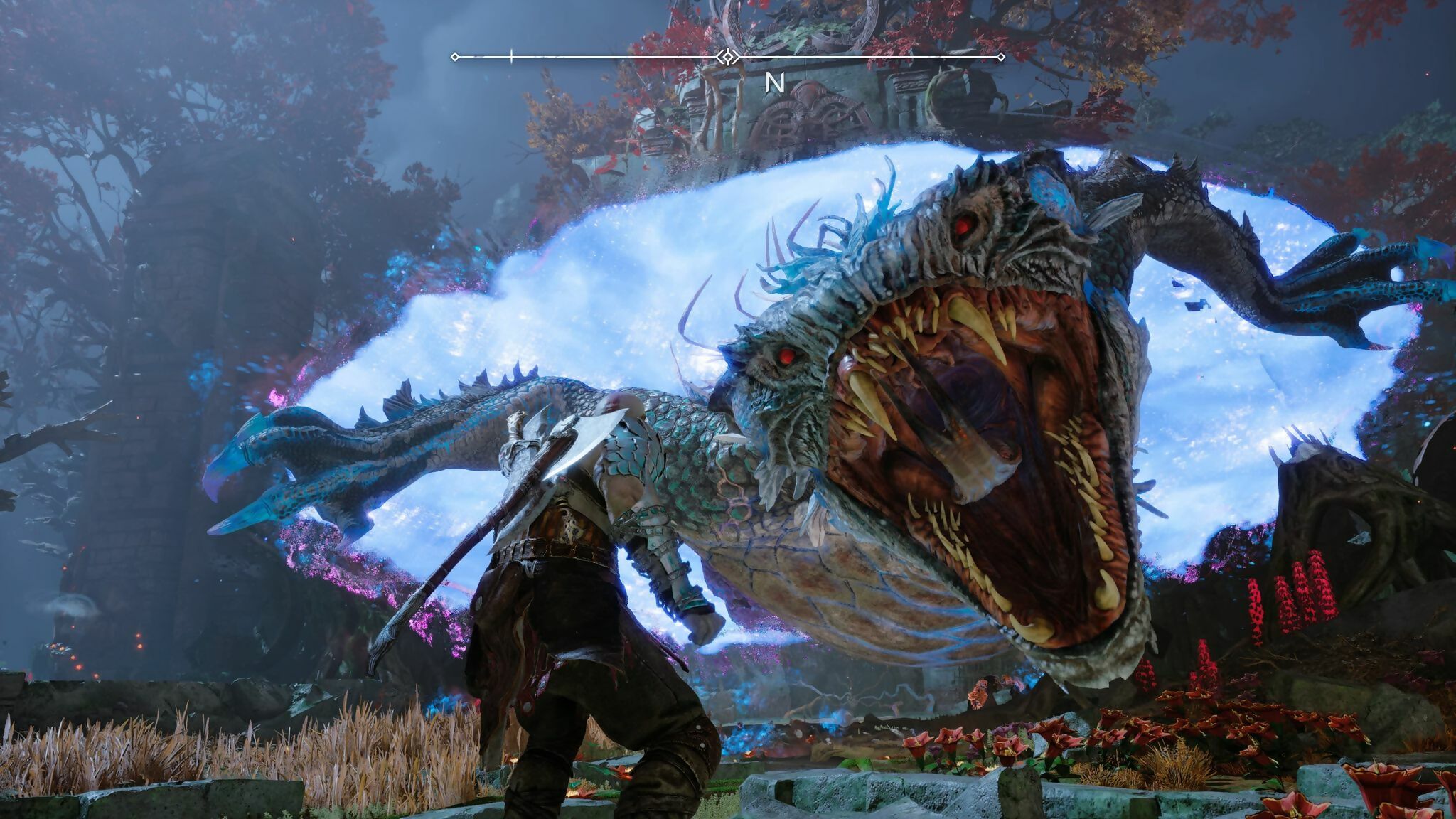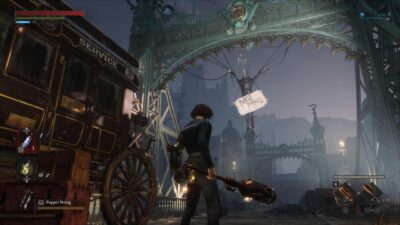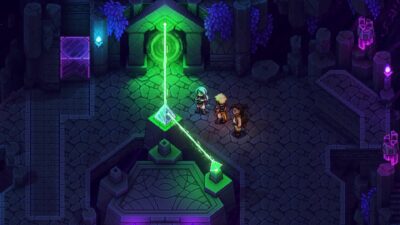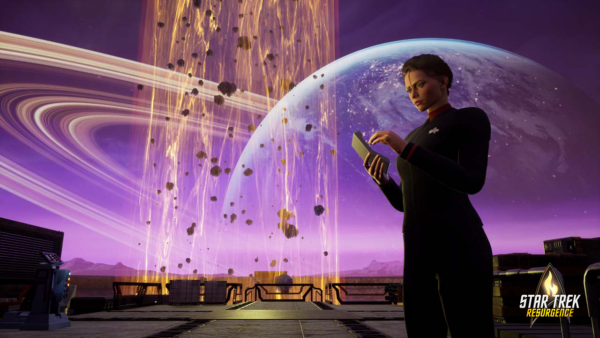
The bar for first-party PlayStation exclusives has been raised in Santa Monica Studios’ latest third-person opus.
How do you follow up what many players consider one of the best soft reboots to an established first-party franchise of all time? With a sequel, of course. Obvious though that next step was, actually topping 2018’s God of War still sounded like a tall order for Santa Monica Studio. After all, while Kratos’ sombre reinvention of a character previously steeped in anger and revenge initially came as a surprise, the resulting adventure was a great rumination on the idea that change (however unlikely) is possible. Even more impressive, then, is that in just four years, the reformed Spartan-turned-god has returned with an even grander, more ambitious journey that is equal parts emotional and introspective. God of War Ragnarök is the well-oiled machine of third-person action games.
The point constantly hammered into you during the course of this 25- to 30-hour adventure is there in the subtitle: Ragnarök is coming. Much more than just a grand-sounding threat, though, averting this prophesied end of days serves as the main driver for Kratos and Atreus this time around. As you can imagine, the father-and-son duo have differing opinions on how to go about doing this, creating an ever-present friction between the two. Atreus is older, but not necessarily wiser or less boisterous. Kratos, meanwhile, still touts a hard exterior that makes it hard for him to break out of his fatherly instincts that are almost too protective.

I believed in the pair’s dynamic every step of the way, largely thanks to Christopher Judge and Sunny Suljic’s nuanced performances, of which much is asked. It’d be so easy for Judge to pepper his Kratos with nothing but monosyllabic line deliveries due to the inherent bluntness of the character, for instance, but through his interaction with others, he carves out pockets of subtlety between the grunts and grumbles.
Side characters like Brok, Sindri, and Freya are all given deeper arcs to explore too, further helping to round out this changed version of the nine realms our heroes are forced to fight through. Somehow, Santa Monica Studio expertly spills these emotional beats into gameplay in ways that should be experienced first-hand.
Speaking of which, fights in Ragnarök continue to be a satisfyingly intimate affair, with the over-the-shoulder, up-close action giving every strike Kratos dishes out an incredible sense of weight, purpose, and power. Santa Monica Studio clearly recognised that nothing with the first game’s combat system was outright broken, so it’s instead chosen to layer even more flexible systems over the established framework to offer players new options and approaches in battle. Light and Heavy Runic attacks return, for example, as does Kratos’ near-unstoppable Spartan Rage ability, yet now they combine with new charge-up attacks, elemental effects, and more.

At first, enemy encounters, as fun as they are to get thrown into, appear overwhelming. Because in addition to Kratos’ standard light and heavy attacks, you’re also managing your companion character’s actions, weighing up the effectiveness of each individual armour and weapon piece’s stats, what amulet upgrades to insert, and so on. In the thrill of the action, though, having all these combat systems work in harmony only need be a luxury prioritised for sadists wanting to play on the hardest difficulty. It helps that Ragnarök never overwhelms you with these various mechanics and considerations all at once, instead dishing them out to you over an extended period of time – to the extent that I was still gaining new game-changing abilities right up until the story’s final hours.
Despite the urgency that the game’s namesake suggests, it’s easy to become distracted in Ragnarök’s changed world. You’ll revisit many of the six or seven realms you did in God of War (2018), true, but Santa Monica Studio has found smart ways to have them deliver a new treat for the eyes. Whether it’s promoting Muspelheim to more than just an endless enemy wave arena or shrouding Midgard in the relentless snow of Fimbulwinter, it’s a constant treat to see these spaces changed as a result of the oncoming catastrophe. But it’s more than that, because the side missions are more thought-through and meaningful in Ragnarök than they are in other triple-A, blockbuster games of this ilk. Odds are if a realm or character was teased beforehand, you’ll bump into them with additional exploration later on.

HIGHLIGHT
One of the best things about both God of War eras of games is the grounded way they depict their ancient gods. Ragnarök is no exception to this rule, portraying such Norse deities as Thor, Odin, and Heimdall as fallible and borderline obnoxious, as opposed to figures people should needlessly worship.
God of War Ragnarök is a bigger, better, and more fulfilling sequel in almost every way. It never once stumbles under the weight of its own ambition either, and acts as a perfect “Part II” to the more than solid foundation set by 2018’s gear-shift entry. The drama, combat options, traversal, world, and side missions are all improved in myriad ways, ending God of War’s Norse saga with a heartfelt bang that doesn’t skimp on spectacle.
This is what big-budget, first-party Sony exclusives are all about, and Ragnarök easily sets the new standard for the form.





